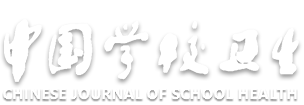Effect of zero-time exercise intervention on physical activity levels and sedentary behavior among college students
-
摘要:
目的 探讨零时间运动(ZTEx)干预对大学生身体活动水平和久坐行为的影响,为有效提高大学生身体活动水平、减少久坐行为提供参考。 方法 2023年9月,在福州市招募某高校45名久坐大学生,按照随机数字表法分为ZTEx组(23名)和对照组(22名);2023年10月—2024年1月,ZTEx组接受为期3个月共2次的焦点小组会议,对照组进行安全健康教育。在干预前后,分别采用国际体力活动问卷和三轴加速度计对大学生久坐和身体活动水平进行测评,同时完成有关身体健康和心理问卷的评估。采用混合效应方差分析和非参数检验对大学生身体健康、心理问卷、久坐和身体活动数据进行统计分析。 结果 干预后,过去7 d ZTEx组大学生提高了低强度身体活动时长[前测(1 492.78±369.50)min;后测(1 918.93±354.63)min]、久坐间断次数[前测(45.26±13.69)次;后测(73.78±16.74)次]、握力[前测(28.77±9.23)kg;后测(31.78±8.00)kg]、30 s连续坐起[前测(22.52±4.90)次;后测(26.96±4.87)次]、一般自我效能感[前测(26.52±4.14)分;后测(32.96±5.24)分]、身体成分总结[前测(66.44±4.83)分;后测(72.62±4.88)分]、心理成分总结[前测(61.21±9.88)分;后测(63.98±9.57)分],同时降低其久坐时长[前测(3 694.28±687.56)min;后测(2 865.90±493.81)min],差异均有统计学意义(P值均<0.01)。干预前后,对照组身体活动及健康指标均无明显变化(P值均>0.05)。 结论 ZTEx可以有效提高久坐大学生的低强度身体活动水平和久坐间断次数并减少久坐行为,进一步促成大学生良好运动习惯的培养,提高身体和心理健康水平。 Abstract:Objective To explore the effects of a zero-time exercise (ZTEx) intervention on physical activity levels and sedentary behavior among college students, providing evidence for improving physical activity and reducing sedentary habits. Methods In September 2023, 45 sedentary college students from a university in Fuzhou were recruited and randomly assigned to either the ZTEx group (23 students) or the control group (22 students) according to a random number table method. ZTEx group received two ZTEx focus group meetings for 3 months, while the control group received safety and health education. The International Physical Activity Questionnaire and a three-axis accelerometer were used to evaluate the sedentary and physical activity levels of college students. At the same time, evaluations related to physical health and psychological questionnaires were completed. Mixed effects analysis of variance and non-parametric tests were used to statistically analyze the physical health, psychological questionnaire, and sedentary and physical activity data of the college students. Results Post-intervention, the ZTEx group showed significant improvements in the duration of low-intensity physical activity [pre-test(1 492.78±369.50)min; post-test(1 918.93±354.63)min] and the number of sedentary interruptions [pre-test(45.26±13.69)times; post-test(73.78±16.74)times]; grip strength [pre-test(28.77±9.23)kg; post-test(31.78±8.00)kg]; sitting up continuously for 30 seconds [pre-test(22.52±4.90)times; post-test(26.96±4.87)times]; general self-efficacy [pre-test(26.52±4.14)points; post-test(32.96±5.24)points]; body composition summary [pre-test(66.44±4.83)points; post-test(72.62±4.88)points]; and psychological composition summary [pre-test(61.21±9.88)points; post-test(63.98±9.57)points], while reducing sedentary time [pre-test(3 694.28±687.56)min; post-test(2 865.90±493.81)min] in the past 7 days, the differences were statistically significant(P<0.05). The control group exhibited no significant changes(P>0.05). Conclusion ZTEx effectively improve the low-intensity physical activity, increases sedentary breaks, and reduces prolonged sitting among college students, fostering healthier habits and improving physical/mental well-being. -
Key words:
- Motor activity /
- Intervention studies /
- Sedentary lifestyle /
- Students
1) 利益冲突声明 所有作者声明无利益冲突。 -
表 1 大学生干预前后过去7 d久坐和身体活动指标比较(x±s)
Table 1. Comparison of sedentary and physical activity indicators among college students in the past 7 days before and after intervention(x±s)
组别 干预前后 人数 久坐时长/min LPA时长/min MPA时长/min VPA时长/min 久坐间断次数/次 对照组 干预前 22 3 786.32±1 416.55 1 465.82±1 143.10 146.32±112.10 0.42(0.00,7.29) 45.45±18.47 干预后 22 3 742.15±925.84 1 492.13±1 161.04 123.40±23.37 0.92(0.00,7.29) 44.77±19.74 ZTEx组 干预前 23 3 694.28±687.56 1 492.78±369.50 131.57±33.34 2.50(2.00,5.00) 45.26±13.69 干预后 23 2 865.90±493.81ab 1 918.93±354.63ab 154.03±131.80 1.67(0.50,4.83) 73.78±16.74ab F组间值 4.70* 0.96 0.12 0.02 10.62** F时间值 6.64* 5.24* 0.00 0.61 27.83** F组间×时间值 5.36* 4.05* 1.10 0.00 30.62** 注:a与对照组比较,P<0.01;b与干预前比较,P<0.01;* P<0.05,** P<0.01。 表 2 大学生干预前后身体健康指标比较(x±s)
Table 2. Comparison of physical health indicators of college students before and after intervention(x±s)
组别 干预前后 人数 心率/(次·min-1) 收缩压/mmHg 舒张压/mmHg 体重/kg 对照组 干预前 22 74.95±11.17 65.41±5.63 106.95±10.15 59.39±12.68 干预后 22 77.55±12.56 67.23±5.80 107.14±10.09 58.53±14.78 ZTEx组 干预前 23 82.91±11.85 71.57±9.07 110.39±10.05 61.25±7.84 干预后 23 79.83±8.39 69.39±8.90 106.04±14.46 61.78±7.98 F组间值 2.93 4.65 0.15 0.64 F时间值 0.03 0.02 2.15 0.03 F组间×时间值 4.06 2.90* 2.54 0.51 组别 干预前后 人数 体脂率/% 30 s连续坐起/次 握力/kg 单脚闭眼站立/s 对照组 干预前 22 25.10±5.59 20.67±6.65 28.89±12.46 20.79±15.89 干预后 22 25.10±5.84 21.36±6.68 29.35±11.91 19.99±14.74 ZTEx组 干预前 23 27.38±7.00 22.52±4.90 28.77±9.23 21.23±19.73 干预后 23 25.85±4.57 26.96±4.87ab 31.78±8.00b 30.73±21.42 F组间值 0.85 5.09* 0.14 1.87 F时间值 1.60 22.39** 12.10** 1.61 F组间×时间值 1.58 11.91** 6.59* 2.62 注:a与对照组比较,P<0.01;b与干预前比较,P<0.01;*P<0.05,**P<0.01;1 mmHg=0.133 kPa。 -
[1] 魏力玟西. 健康中国背景下大学生久坐行为现状与干预路径研究[J]. 体育视野, 2024(14): 109-111.WEI L M X. A study on the current status and intervention pathways of sedentary behavior among college students in the context of a healthy China[J]. Sports Vis, 2024(14): 109-111. (in Chinese) [2] DUTTA N, KOEPP G A, STOVITZ S D, et al. Using sit-stand workstations to decrease sedentary time in office workers: a randomized crossover trial[J]. Int J Environ Res Public Health, 2014, 11(11): 6653-6665. http://www.scienceopen.com/document_file/52ec0152-0ca8-4ce1-89b7-59e9296124c1/PubMedCentral/52ec0152-0ca8-4ce1-89b7-59e9296124c1.pdf [3] LAI A Y K, STEWART S M, WAN A N T, et al. Development and feasibility of a brief zero-time exercise intervention to reduce sedentary behaviour and enhance physical activity: a pilot trial[J]. Health Soc Care Commun, 2019, 27(4): e233-e245. http://pubmed.ncbi.nlm.nih.gov/30821866/ [4] LAI A Y K, STEWART S M, WAN A N T, et al. Training to implement a community program has positive effects on health promoters: JC Family Project[J]. Transl Behav Med, 2018, 8(6): 838-850. doi: 10.1093/tbm/iby070 [5] 宋冠菲. 久坐行为与大学生骨密度、肌肉健康和身体姿态的关系[D]. 北京: 首都体育学院, 2021.SONG G F. The relationship between sedentary behavior and bone density, muscle health, and body posture of college students[D]. Beijing: Capital University of Physical Education and Sports, 2021. (in Chinese) [6] 杨洪杰, 刘善云. ROC曲线法建立大学生健康体力活动水平参考标准[J]. 体育学刊, 2022, 29(4): 138-144.YANG H J, LIU S Y. Establishing reference standards for physical activity levels of college students using ROC curve method[J]. J Phys Educ, 2022, 29(4): 138-144. (in Chinese) [7] CRAIG C L, MARSHALL A L, SJOSTROM M, et al. International ph-ysical activity questionnaire: 12-country reliability and validity[J]. Med Sci Sports Exerc, 2003, 35(8): 1396. doi: 10.1249/01.MSS.0000078923.96621.1D [8] American College of Sports Medicine, PESCATELLO L S, ARENA R, et al. ACSM's guidelines for exercise testing and prescription[M]. 9th ed. Philadelphia: Wolters Kluwer/Lippincott Williams & Wilkins Health, 2014. [9] 贺刚, 黄雅君, 王香生. 加速度计在儿童体力活动测量中的应用[J]. 体育科学, 2011, 31(8): 72-77.HE G, HUANG Y J, WANG X S. The application of accelerometers in measuring physical activity in children[J]. China Sports Sci, 2011, 31(8): 72-77. (in Chinese) [10] FREEDSON P S, MELANSON E, SIRARD J. Calibration of the computer science and applications, inc. accelerometer[J]. Med Sci Sports Exerc, 1998, 30(5): 777-781. doi: 10.1097/00005768-199805000-00021 [11] ROBERTS H, DENISON H J, MARTIN H J, et al. A review of the measurement of grip strength in clinical and epidemiological studies: towards a standardised approach[J]. Age Aging, 2011, 40(4): 423-429. doi: 10.1093/ageing/afr051 [12] JONES C J, RIKLI R E, BEAM W C. A 30s chair-stand test as a measure of lower body strength in community-residing older adults[J]. Res Q Exerc Sport, 1999, 70(2): 113-119. doi: 10.1080/02701367.1999.10608028 [13] NEWTON R. Review of tests of standing balance abilities[J]. Brain Inj, 1989, 3(4): 335-343. doi: 10.3109/02699058909004558 [14] ZHANG J X, SCHWARZER R. Measuring optimistic self-beliefs: a Chinese adaptation of the general self-efficacy scale[J]. Psychologia, 1995, 38(3): 174-181. http://psycnet.apa.org/psycinfo/1996-35921-001 [15] 王才康, 胡中锋, 刘勇. 一般自我效能感量表的信度和效度研究[J]. 应用心理学, 2001(1): 37-40.WANG C K, HU Z F, LIU Y. A study on the reliability and validity of General Self Efficacy Scale[J]. Appl Psychol, 2001(1): 37-40. (in Chinese) [16] 李鲁, 王红妹, 沈毅. SF-36健康调查量表中文版的研制及其性能测试[J]. 中华预防医学杂志, 2002, 36(2): 109-113.LI L, WANG H M, SHEN Y. Development and performance testing of the Chinese Version of SF-36 Health Survey Scale[J]. Chin J Prev Med, 2002, 36(2): 109-113. (in Chinese) [17] 王琪, 李小杉, 赵薇, 等. SF-36量表用于大学生生活质量调查的信效度评价[J]. 中国学校卫生, 2014, 35(1): 118-120. http://www.cjsh.org.cn/article/id/zgxxws201401045WANG Q, LI X S, ZHAO W, et al. Reliability and validity evaluation of SF-36 Scale for investigating the quality of life of college students[J]. Chin J Sch Health, 2014, 35(1): 118-120. (in Chinese) http://www.cjsh.org.cn/article/id/zgxxws201401045 [18] HU M, ZENG N, GU Z, et al. Short-term high-intensity interval exercise promotes motor cortex plasticity and executive function in sedentary females[J]. Front Hum Neurosci, 2021, 15: 620958. http://www.socolar.com/Article/Index?aid=100087892074&jid=100000008322 [19] 王艺达, 刘君, 王晓玲, 等. 基于可穿戴电子设备干预对健康青少年身体活动和久坐行为影响的Meta分析[J]. 中国组织工程研究, 2025, 29(8): 1693-1704.WANG Y D, LIU J, WANG X L, et al. Meta analysis of the effects of wearable electronic device intervention on physical activity and sedentary behavior in healthy adolescents[J]. Chin J Tissue Eng, 2025, 29(8): 1693-1704. (in Chinese) [20] 殷明越, 陈志力, 李汉森, 等. 碎片化运动: 兼具应用可行性与健康促进效果的新策略[J]. 西安体育学院学报, 2023, 40(5): 615-627.YIN M Y, CHEN Z L, LI H S, et al. Fragmented sports: a new strategy that combines feasibility and health promotion effects[J]. J Xi'an Phys Educ Univ, 2023, 40(5): 615-627. (in Chinese) [21] CHEVAL B, BOISGONTIER M P. The theory of effort minimization in physical activity[J]. Exerc Sport Sci Rev, 2021, 49(3): 168-178. http://journals.lww.com/acsm-essr/Fulltext/2021/07000/The_Theory_of_Effort_Minimization_in_Physical.3.aspx?context=FeaturedArticles&collectionId=2 [22] YEUNG W F, LAI A Y, HO F Y, et al. Effects of zero-time exercise on inactive adults with insomnia disorder: a pilot randomized controlled trial[J]. Sleep Med, 2018, 52: 118-127. http://www.zhangqiaokeyan.com/journal-foreign-detail/0704024357581.html -

 点击查看大图
点击查看大图
计量
- 文章访问数: 331
- HTML全文浏览量: 195
- PDF下载量: 46
- 被引次数: 0





 下载:
下载: